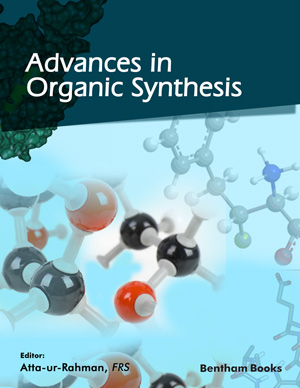A Review on Synthesis, Chemistry, and Medicinal Properties of Benzothiazines and their Related Scaffolds

- Authors: Abdulrahman S. Alharbi1, Abeer N. Al Romaizan2, Reda M. Abdel-Rahman3
-
View Affiliations Hide AffiliationsAffiliations: 1 Department of Chemistry, Faculty of Science, King Abdulaziz University, Jeddah, KSA 2 Department of Chemistry, Faculty of Science, King Abdulaziz University, Jeddah, KSA 3 Department of Chemistry, Faculty of Science, King Abdulaziz University, Jeddah, KSA
- Source: Advances in Organic Synthesis: Volume 17 , pp 291-336
- Publication Date: July 2022
- Language: English
Background: Sulfur and nitrogen heterocyclic systems, especially benzothiazine derivatives, play a vital role in the search for newer drugs due to a significant scientific interest owing to their broad range of synthetic values, various routes, and pharmacological properties. It is known that benzothiazines are divided into five units: 1,2-, 2,1-, 1,3-, 3,1-, and 1,4-benzothiazines. Incorporating two moieties (benzo and thiazine) increases the biological activity of both, and thus their values synthesize new heteropolycyclic systems. Considering their diverse roles in the biological area and synthesis chemistry, huge effects have been found in developing novel and efficient methodologies to synthesize various benzothiazine moieties with different substitutions. Methods: The present chapter comprises an inclusive vision of new and straightforward synthetic strategies to afford benzothiazine and related systems. This chapter covers various reactions for synthesizing benzothiazines, such as alkylation, acylation, aroylation, halogenation, elimination, rearrangement, ring enlargement, reduction, and oxidation. Besides, it also includes other reactions, like cyclization, addition, condensation, cyclocondensation, metal/acid-catalyzed, hydrolysis, aminolysis, hydrazinolysis, complexation, and enantio/regioselective. Moreover, many benzothiazines have been evaluated for their therapeutic activity. Result: The synthesis and chemical reactions of benzothiazines derivatives have been reported. The preparation approaches of some compounds have been found to involve many steps, and others one-pot, resulting in good to excellent yields. Also, many synthesized compounds have shown medicinal properties, such as aldose reductase,anti-inflammatory, analgesic, antimicrobial, antibacterial, antifungal, anticancer, antiviral, antioxidant, herbicidal, and anticarcinogenic, anti-tubercular, anti anthelmintic, and antitumor probes. Conclusion: The chapter covers various methods to synthesize benzothiazines and their derivatives, thereby displaying their biological activities.
-
From This Site
/content/books/9789815040524.chapter-6dcterms_subject,pub_keyword-contentType:Journal105


